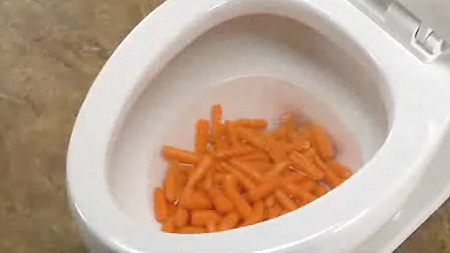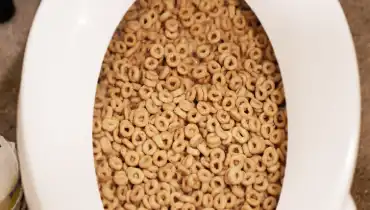Is it Suitable to Dispose of Food in the Toilet?
Is it Suitable to Dispose of Food in the Toilet?
Blog Article
They are making a number of good pointers relating to Think Twice Before Flushing Food Down Your Toilet as a whole in this post which follows.

Intro
Many people are often confronted with the problem of what to do with food waste, particularly when it pertains to leftovers or scraps. One typical concern that emerges is whether it's okay to flush food down the bathroom. In this article, we'll delve into the reasons individuals may take into consideration purging food, the repercussions of doing so, and different techniques for correct disposal.
Reasons that individuals may consider purging food
Lack of awareness
Some people may not recognize the potential injury caused by flushing food down the bathroom. They might incorrectly think that it's a safe practice.
Benefit
Purging food down the toilet may feel like a quick and very easy solution to taking care of unwanted scraps, especially when there's no close-by trash can readily available.
Laziness
Sometimes, individuals may just pick to flush food out of large idleness, without considering the repercussions of their activities.
Consequences of flushing food down the toilet
Ecological effect
Food waste that winds up in waterways can contribute to contamination and damage aquatic ecological communities. Additionally, the water made use of to flush food can stress water resources.
Pipes issues
Purging food can lead to blocked pipelines and drains, triggering pricey plumbing repair services and troubles.
Sorts of food that ought to not be purged
Coarse foods
Foods with coarse textures such as celery or corn husks can obtain tangled in pipes and trigger blockages.
Starchy foods
Starchy foods like pasta and rice can take in water and swell, leading to blockages in pipelines.
Oils and fats
Greasy foods like bacon or food preparation oils should never ever be purged down the commode as they can strengthen and create clogs.
Correct disposal approaches for food waste
Using a waste disposal unit
For homes equipped with garbage disposals, food scraps can be ground up and purged with the plumbing system. Nonetheless, not all foods appropriate for disposal in this manner.
Recycling
Certain food packaging products can be reused, lowering waste and decreasing ecological influence.
Composting
Composting is an eco-friendly way to throw away food waste. Organic products can be composted and utilized to enrich soil for horticulture.
The relevance of appropriate waste administration
Decreasing environmental harm
Correct waste administration practices, such as composting and recycling, help decrease contamination and preserve natural deposits for future generations.
Securing plumbing systems
By staying clear of the technique of flushing food down the toilet, property owners can stop pricey pipes fixings and preserve the honesty of their plumbing systems.
Verdict
In conclusion, while it may be alluring to flush food down the commode for benefit, it's important to understand the prospective effects of this activity. By taking on appropriate waste monitoring techniques and getting rid of food waste properly, people can add to much healthier plumbing systems and a cleaner environment for all.
FLUSH FOOD DOWN THE TOILET?
FLUSHING FOOD CAN CAUSE BLOCKED DRAINS IN YOUR HOME
All of the plumbing fixtures in your home are connected to the same sewer pipe outside of your home. This outdoor sewer pipe is responsible for transporting all the wastewater from your home to the Council sewer mains. Even small pieces of food that go down the kitchen sink can cause problems for your sewer. It should therefore be obvious that flushing larger bits of food, such as meat, risks a clog in either the toilet itself or the sewer pipes. Flushing greasy food is even more problematic because oil coagulates when it cools, coating the interior lining of your pipes.
THE TOILET IS NOT A BIN
Food isn’t the only thing that people shouldn’t be flushing down the toilet. People use the toilet to dispose of all kinds of things such as tampons, makeup wipes, dental floss, kitty litter and even underwear. Water goes to great lengths to educate residents about the high costs and stress placed on wastewater treatment systems simply from people flushing the wrong stuff down the toilet. It costs taxpayers millions of dollars each year, and homeowners thousands in blocked drain repairs.
FLUSHING FOOD IS A WASTE OF WATER
Flushing food is a waste of our most precious resource - water. In June this year Level 1 water restrictions were introduced to protect water supply from drought conditions. Much of New South Wales continues to be affected by prolonged drought with recent figures revealing up to 97 per cent of the state remains in drought. Depending on whether you have a single or dual flush toilet, every single flush uses between five and 11 litres of water. In the current climate this is a huge amount of water to be wasting on flushing food that should be placed in the bin (or better yet, the compost).
https://www.jabplumbingsolutions.com.au/blog/can-you-flush-food-down-the-toilet

As a serious person who reads about Think Twice Before Flushing Food Down Your Toilet, I thought sharing that topic was a great idea. Enjoyed reading our piece? Please quickly share it. Let someone else discover it. We cherish your readership.
Request Your Service Report this page